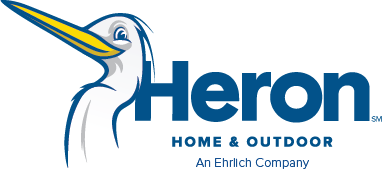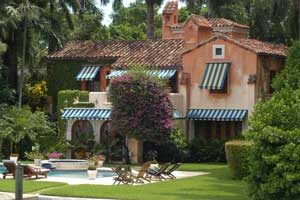North Facing Garden Shade
Metro Orlando FL | Kissimmee - Sanford - Leesburg
As a homeowner, you may have already become familiar with your property’s particular layout and landscape, to the point that you know which specific areas on the North side of your property will become completely shaded until spring. All plants within these shade areas will be affected by the reduced sunlight.
- Some plants will slow their growth.
- Some will go into biostasis, which is a substantial metabolic slow down in growth.
- A few plants will actually thrive with reduced sunlight. All Southern turf grass species will recede with reduced sunlight.
As the shade line increases on the North side of your home during the winter, your turf grass will likely become thinner and not thrive. This is known as Northside Shade Decline.
Winter Sun and Plant Growth Complications
As we advance towards the shortest day of the year in the Northern Hemisphere (winter solstice), daylight hours become shorter. This decreases the amount of daylight available for a plant to photosynthesize sunlight, which is how a plant creates its own food. As a result, plants’ ability to regenerate tissue is substantially curtailed, which is why plants do not grow very fast, if at all, in the winter. Plant tissue growth is continuous, but it slows down to a rate where plant tissue is lost faster than it can be regenerated. This leads to apparent thinning of the plant, since there is less leaf surface and tissue.
At the same time, the sun’s trajectory in the sky changes such that the path it travels in the sky gets lower towards the south each day as winter solstice approaches. This corresponds to increased shade lines on the north side of all objects. The shade line of your home will be extended significantly relative to where it may have reached at the peak of summer. The taller your home is, the more extended and exaggerated that shade line will reach on the north side.
Ready for your INSTANT quote?
Click the button below to leave your information and we’ll be in touch with a free quote!
Water Evaporation and North Shade Decline
There are other factors at play, as well. These shaded areas are no longer exposed to direct sunlight which now changes the rate at which water evaporates from the soil surface. You can expect these areas to retain moisture for prolonged periods since the evaporative rate has been substantially reduced. If the water application rate remains unchanged, now you have a cultural imbalance in which the soil is receiving more water than it can actually retain and absorb. This will lead to excessive water saturation of the soil which can cause a number of different problems. Excessive moisture leads to parasitic pathogens which may cause fungus to turf grass and ornamentals. Brown Patch and Pythium are serious fungi that threaten turf grass this time of year and are more difficult to control in excessive moisture conditions. More obvious, however, is the emergence of dollar weed, Hawksbeard, and Water Sedge (kyllinga) in these shaded areas now holding excess water. Water these shaded areas sparingly.
Professional Advice for Northside Shade Decline
If your technician indicates decline of turf due to northside shade decline keep in mind that this is an unavoidable natural occurrence on your property. The technician may suggest that you reduce irrigation to the area(s), if he observes conditions of excessive moisture. Applying fertilizer to these areas will not help appreciably since the grass will not make efficient use of the fertilizer. The areas will improve once sunlight reaches these areas again. Also, avoid traffic to these areas since grass will recover very slowly.
HOW TO HANDLE NORTHSIDE SHADE DECLINE
To address northside shade decline, choose shade-tolerant grass varieties, prune nearby trees for better sunlight penetration, and consider alternative landscaping options like shade-loving plants. Adjust watering and fertilization based on reduced sunlight, and regularly monitor and address potential issues like moss or fungal growth.
NORTH FACING SHADE PLANTS
For a north-facing yard, consider shade-tolerant plants like hostas, ferns, astilbes, and hydrangeas. Shade-loving ground covers such as vinca and lamium can thrive, along with perennial flowers like impatiens and bleeding hearts. Choosing plants adapted to lower light levels enhances gardening success.
GRASS FOR NORTH FACING YARDS
In a north-facing garden with limited sunlight, opt for shade-tolerant grass varieties like fine fescue or creeping red fescue. These grasses thrive in lower light conditions, maintaining a lush appearance while adapting well to the reduced sunlight typical in north-facing areas.
How to Handle Northside Shade Decline Serving Orlando and surrounding counties
Serving satisfied customers in:



